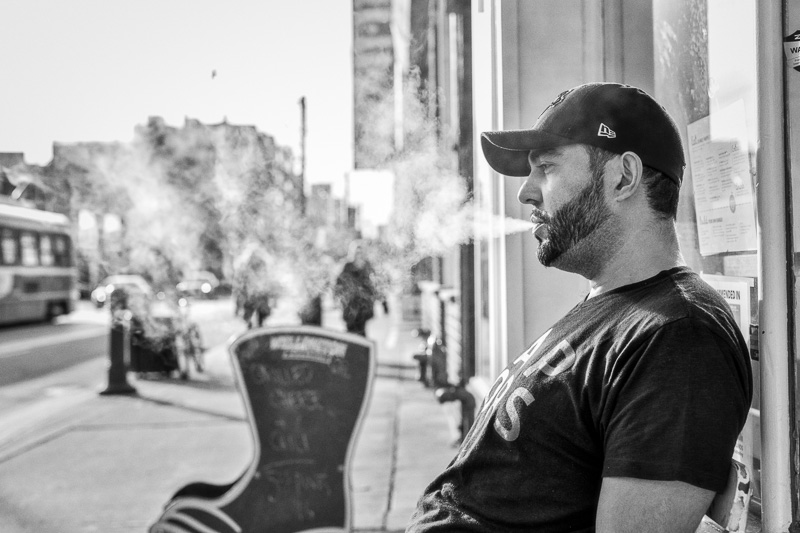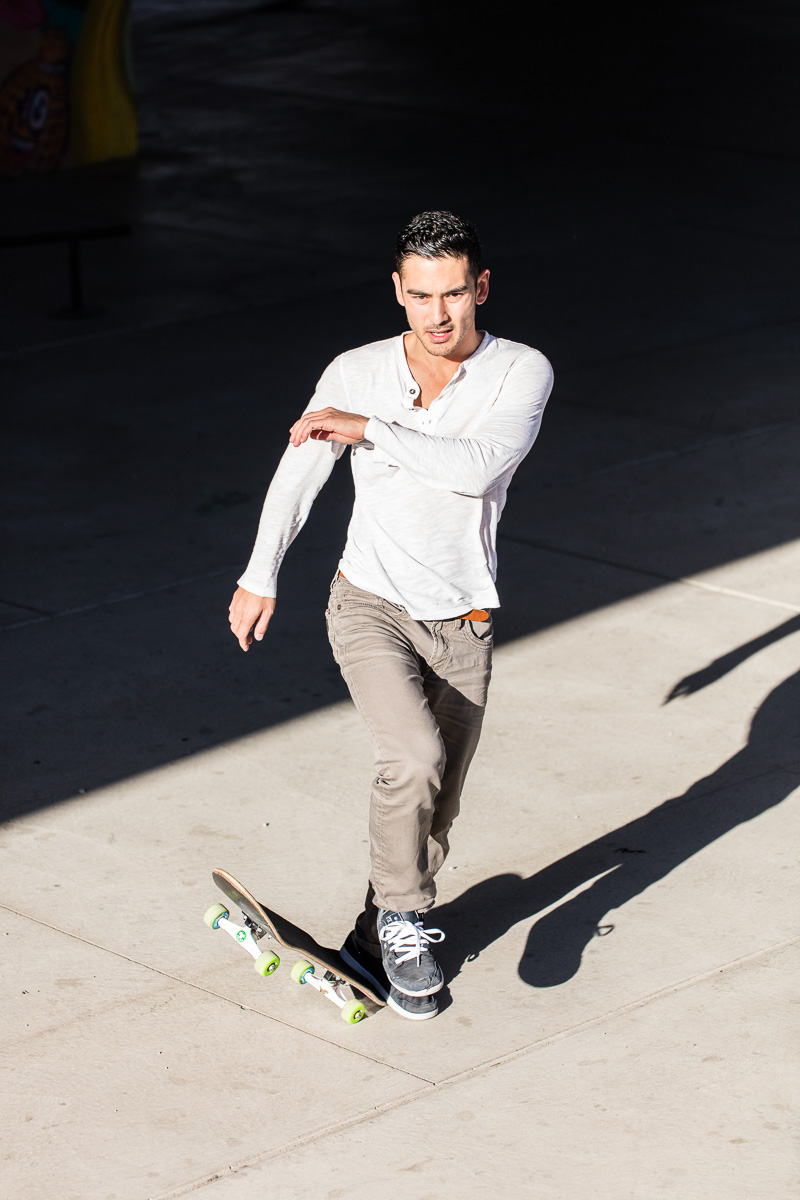Like most people who do street photography, I started doing it because it’s fun and interesting. I’ve learned a lot about local geography. I’ve gotten a lot of exercise. And I’ve met a lot of fascinating people. Quite apart from the physical and social dimensions, there is, lurking in the background, something of an intellectual (or even spiritual) quest at play. I don’t take photos of people out of some lurid voyeuristic obsession, but because I’m drawn to fundamental questions. Taking photos of people is a way to address those questions. I’m drawn to questions of identity. What does it mean to be a person? What does it mean to be a person socially entwined with other persons? What does it mean to be a person physically entwined with an urban environment? What are our responsibilities to each other in this environment?
Despite the benefits and the high-minded questions, the practice of street photography is hampered by trivial concerns. There seem to be a lot of rules about what counts as street photography. Typically, these rules are established by people who want to protect ground they’ve staked. Only film. Only black and white. Only candid. Only ambushed. Only people. Only 50mm or less. Only close-ups. On and on. People who view street photography as a species of documentary photography or photojournalism have another rule: no posed photos. People protect this rule so fiercely, you’d think Moses brought it down from the mountain on a stone tablet. I find it amusing that people get so wound up about the one area of photography that makes no money for anybody. I find it amusing, too, that it’s often impossible to tell, simply from examining a photograph, whether it was posed or unposed. I offer two photos of my own to illustrate.
A cursory glance suggests that the first is unposed and the second is posed. The first is a casual shot. The subject sits on the sidewalk and exhales cigarette smoke. His gaze is 90 degrees from the camera’s view as he looks to the left where a streetcar is passing. The second is more formally precise in its composition. A strong low light produces a long shadow and bold contrast. More importantly, the subject appears to be staring directly at the camera.

In fact, the first is posed and the second is unposed. Let’s look again.
I was walking west along Queen Street past Broadview when I saw a man blowing huge plumes from an e-cigarette. Two things struck me. First, the temperature was 5 degrees and he was wearing a T-shirt. Second, the plumes of smoke interacted with the sunlight to produce an atmospheric effect. I approached and said: “I like the way your smoke plays in the sunlight. Would you mind exhaling again?” Now that I think of it, that’s a pretty Asperger’s way to start a conversation, but he didn’t seem to mind and said: “No problem.” He inhaled as I knelt. He exhaled as I released the shutter. I got maybe 7 shots before the smoke dissipated. He didn’t change anything about his demeanor or what he was doing, but, technically speaking, it was a posed photograph. I directed him in order to produce the shot I wanted.

For the second shot, I was poking around the Underpass Park in Corktown by Eastern Avenue. A guy was skateboarding there. I started up the ramp that follows Eastern Avenue across the Don River, hoping for an elevated position that would give me a better point of view. Most of the time, he noodled around in the shadows. But on one occasion, he came off a concrete structure and rolled out into the light. From his perspective it was blinding, so he couldn’t really see what I was up to. I just happened to release the shutter as he struck this GQ pose. In fact, it was part of a broader motion to keep his balance. Purely accidental. Purely unposed.